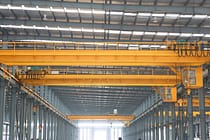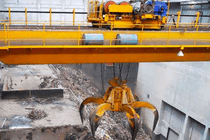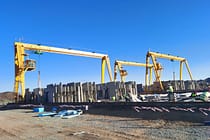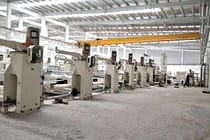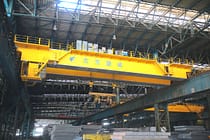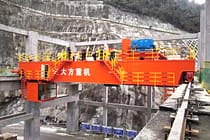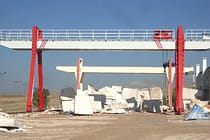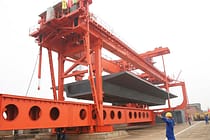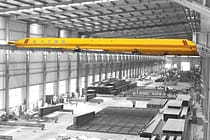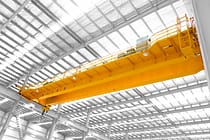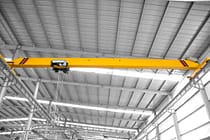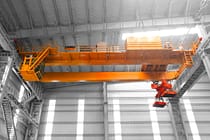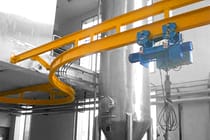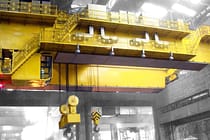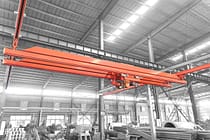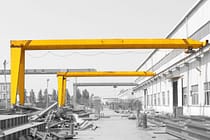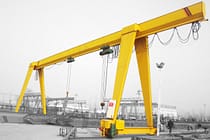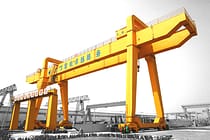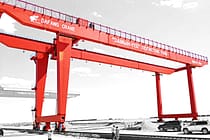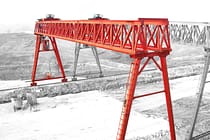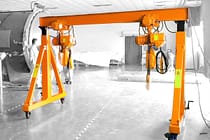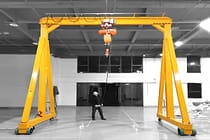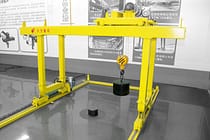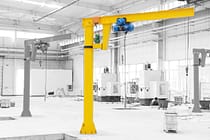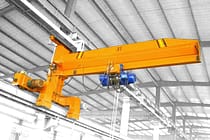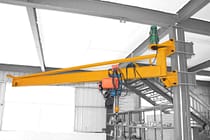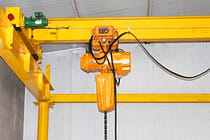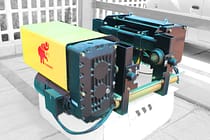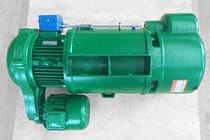How To Calculate Deflection Of Overhead Crane
An overhead crane is an essential tool for lifting and transporting heavy loads in industrial environments. However, to ensure the safe and efficient operation of an overhead crane, it is crucial to understand the deflection of the crane. In this article, we will discuss what deflection is, why it is important, and how to calculate deflection of an overhead crane.
What is Deflection?
Deflection is the degree to which a crane’s structure bends or deforms under load. It is an essential factor to consider when designing, operating, and maintaining an overhead crane. Crane deflection can be caused by various factors, including weight distribution, acceleration, and vibrations.
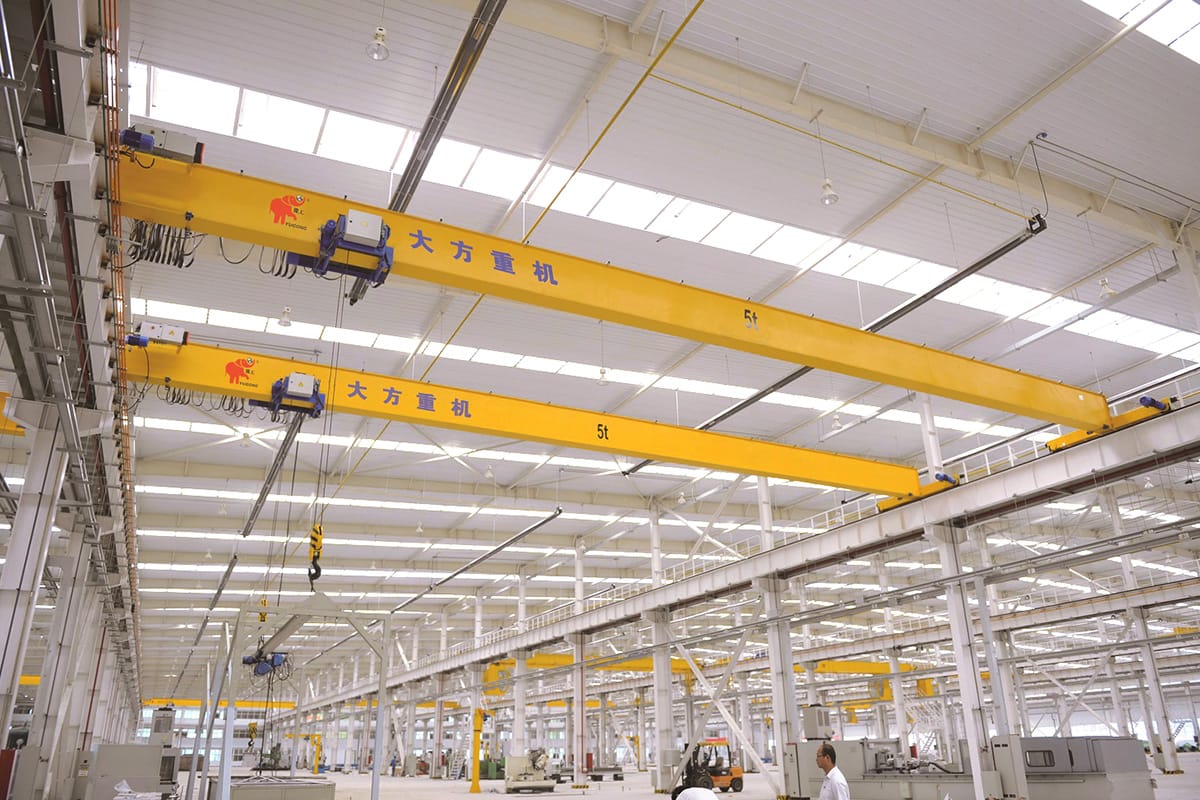
Why is Deflection Important?
The deflection of an overhead crane can significantly impact its safety and efficiency. If a crane’s structure deflects too much, it can cause the crane to tip over, putting the operator and anyone nearby at risk. Moreover, excessive deflection can also lead to the fatigue of crane components, reducing the crane’s lifespan and increasing maintenance costs.
Vertical Deflection Criteria
Vertical deflection criteria refers to the maximum (vertical) deflection ratio allowed for a lifting device. Vertical deflection differs from horizontal deflection, but both are taken into account for enclosed track bridge cranes. Vertical deflection refers to the change in position of a crane's bridge, track, or boom along the vertical axis.
Most crane systems are manufactured to an approximate deflection because manufacturers have no control over installation, foundation rigidity, or the standard variation in thickness tolerances for the piping, tubing, steel plate, and sheet metal. This means that some variation above or below the deflections defined by manufacturers should be considered normal. However, when overhead cranes are installed according to the standard installation manual and maintained according to the manufacturer’s installation maintenance manual, you can be assured of the safety of lift products and their ability to handle chosen rated capacities and performance standards.
Measuring Deflection for Safety Standards
When measuring deflection for safety standards, the deflection is measured at 100% capacity, rather than 125% capacity. According to ANSI Standards (ANSI/ASME B30.2) for Overhead Traveling Cranes Operational and Running Tests, “Standard deflection must be measured with a load of 100 percent of the rated capacity and must not exceed the allowable deflection specified by the applicable design standard.” For each type of crane, the deflection value differs depending on the crane's overall length, span, or reach.
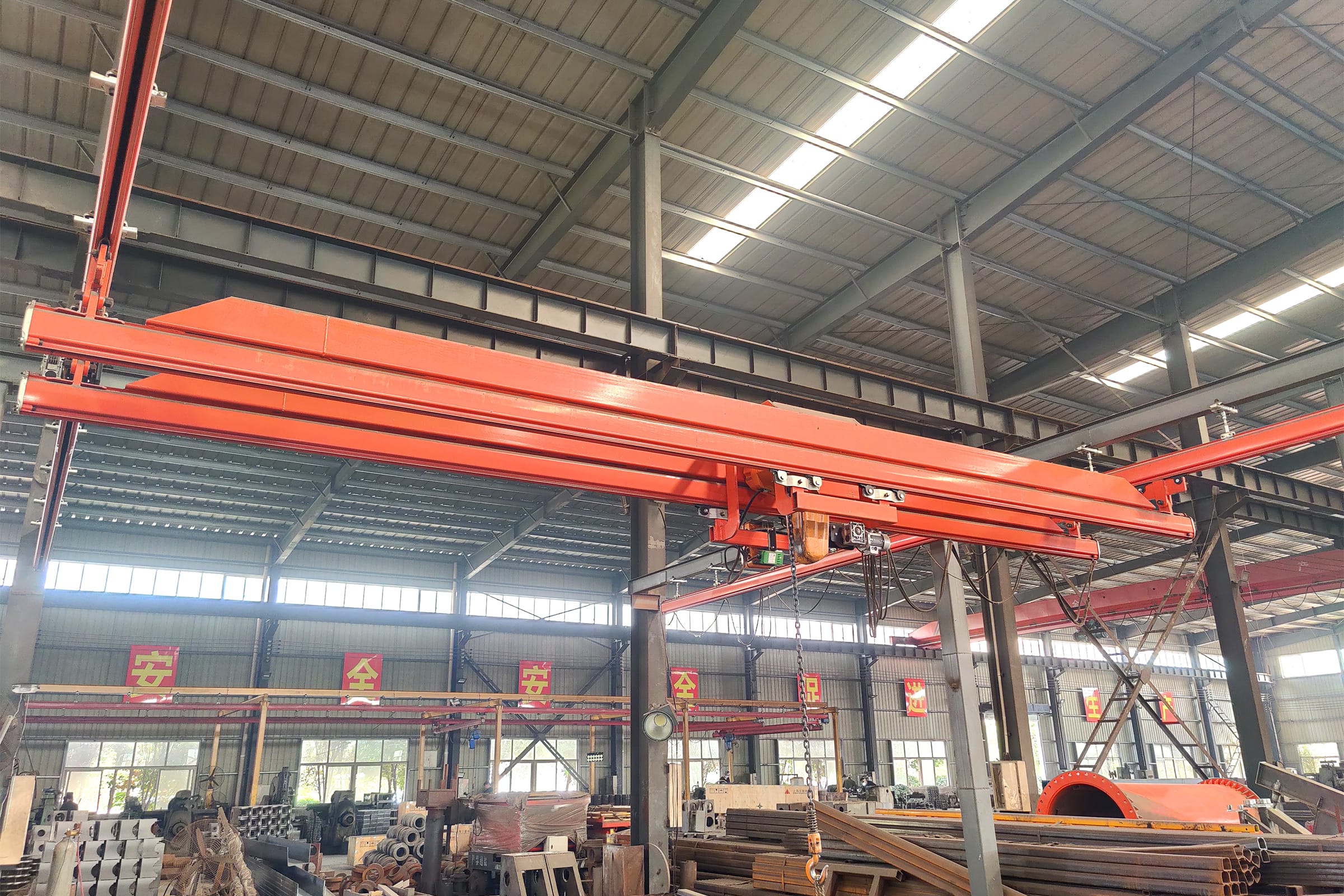
Calculating Vertical Deflection
For workstation (enclosed track) bridge cranes, the vertical deflection value is less than for heavier bridge cranes. Enclosed track workstation bridge cranes have a deflection limit of L/450 where “L” is the length, or span, of the crane. In other words, to determine the deflection of your workstation bridge crane, you must first know its span or length. This equation is typically measured in inches or centimeters because the total deflection should be very minor. If your deflection is higher than a value measured in inches, you may have a problem.
For example, let’s say you have a 34-foot bridge on a workstation bridge crane. The deflection can be determined by first changing the unit of measurement from feet to inches. A 34-foot bridge is 408 inches long (feet x 12 = inches). Divide 408 inches by the specified deflection limit for enclosed bridge cranes (L/450). That will give you a deflection of less than one inch (.9 inches).
Calculating Horizontal Deflection
While vertical deflection is important to consider for overhead cranes, horizontal deflection is also a critical factor to ensure the safety and reliability of the lifting equipment. Horizontal deflection is defined as the displacement of the crane's runway beam at the centerline when under a full-rated load.
The horizontal deflection of a crane is typically measured by a deflection gauge or by laser measurement tools. The deflection gauge is a device that measures the relative movement of the crane's runway beam at the centerline under full load. Laser measurement tools, on the other hand, use a laser to measure the distance between two points to calculate the deflection.
The allowable horizontal deflection for overhead cranes is usually set at 1/600th of the span for bridge cranes and 1/400th of the height for jib cranes. However, this can vary depending on the specific design standard and manufacturer specifications.
Organizational Specifications
As mentioned earlier, the allowable deflection values for overhead cranes can vary from crane to crane and from association to association. That's why it is important to refer to the organizational specifications set by the manufacturer or the relevant association when designing, installing, and maintaining overhead cranes.
For instance, the Crane Manufacturers Association of America (CMAA) sets standards for overhead cranes used in North America. The CMAA has classified overhead cranes into six service classes based on the severity of the intended usage. Each service class has different specifications for the allowable deflection, load capacity, and other factors.
How to Calculate Deflection of Overhead Crane?
The deflection of an overhead crane can be calculated using a few different formulas. Here are the steps to calculate the deflection of an overhead crane:
Step 1: Determine the Load
First, determine the weight of the load that the crane will be lifting. This weight should include the weight of the load and the weight of the lifting equipment.
Step 2: Determine the Load Distribution
Next, determine how the weight of the load will be distributed across the crane’s structure. This can vary depending on the crane’s design, the lifting equipment used, and the shape and size of the load.
Step 3: Calculate the Deflection
Once you have determined the load and load distribution, you can calculate the deflection of the crane using the following formula:
Deflection = (5 x Load x Distance^4) / (384 x Modulus of Elasticity x Moment of Inertia)
Where:
Load = the weight of the load being lifted
Distance = the distance from the center of the load to the point where deflection is being measured
Modulus of Elasticity = a measure of a material’s stiffness and resistance to deformation
Moment of Inertia = a measure of a structure’s resistance to bending
Factors Affecting Deflection
Several factors can affect the deflection of an overhead crane. Here are some of the most significant factors to consider:
Weight of the Load
The weight of the load is one of the most critical factors affecting deflection. The heavier the load, the more the crane will deflect.
Load Distribution
The way that the weight of the load is distributed across the crane’s structure can also impact deflection. Uneven weight distribution can cause the crane to deflect more in some areas than others.
Crane Design
The design of the crane itself can also impact deflection. Factors like the length of the crane’s boom, the type of lifting equipment used, and the crane’s overall weight can all affect how much the crane deflects under load.
Crane Maintenance
Finally, the maintenance of the crane can also impact deflection. Over time, wear and tear on the crane’s components can cause the crane to deflect more under load.
Calculating the deflection of an overhead crane is essential for ensuring the safety and efficiency of the crane. By understanding what deflection is, why it is important, and how to calculate it, crane operators and maintenance professionals can keep their cranes in optimal condition and minimize the risk of accidents.
Send Your Inquiry
- Email: sales@hndfcrane.com
- WhatsApp: +86-191 3738 6654
- Tel: +86-373-581 8299
- Fax: +86-373-215 7000
- Add: Changnao Industrial District, Xinxiang City, Henan Province, China
